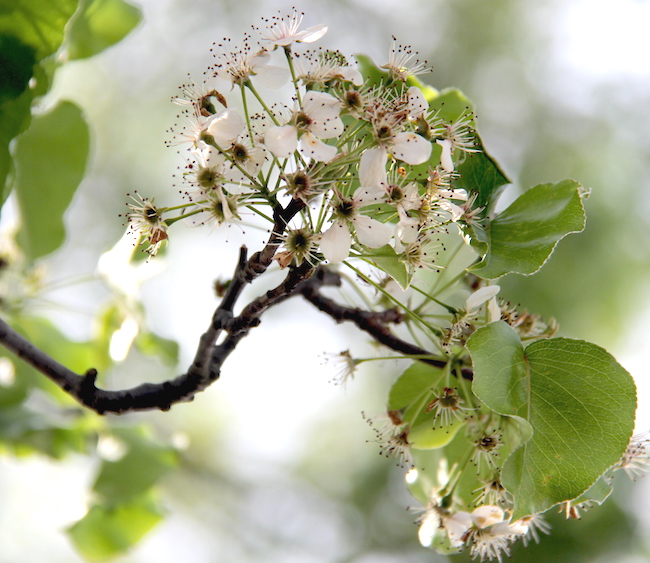Callery pear trees, Pyrus calleryana, are one of the first trees to bloom in early March throughout north Georgia. In full flower, these trees look like a white cloud and are actually quite beautiful.
These showy flowers only last a couple of weeks before the trees begin to leaf out and become inconspicuous until next spring. Callery pears are native to Korea and China, and one of the more popular cultivars seen in landscapes throughout Georgia is the Bradford pear.
The Bradford produces inedible, sterile fruits because it does not self-pollinate. They have been widely planted throughout the United States since the early 1900s as an ornamental.
Unfortunately, Bradford Callery pears are generally considered short-lived trees. As a group, these flowering pear trees tend to have a very weak, vertical branching structure that is notorious for splitting and breaking.
Most trees live 10 to 15 years, 20 with luck, before beginning to self-destruct with any wind loading or storm. A Bradford pear tree next to the Extension office in Bartow County split in half as a result of a storm last fall.
Genetically, pear trees are programmed to grow this way and corrective pruning only appears to delay the inevitable breakage of tree limbs. Many home landscapers are often disappointed by the problems plagued by these trees.
These trees were overused in the landscaping industry 20 to 30 years ago. The public is, hopefully, starting to realize there are stronger, longer-lived trees that are better choices for more permanent landscapes.
However, new cultivars of Pyrus calleryana were bred to reduce the tree's tendency to split in snow or high winds. The Bradford pear cultivar, other Pyrus calleryana cultivars and Pyrus betulaefolia, or Asian pear, can hybridize and produce fertile fruit with viable seeds. Birds spread the seeds. In addition, fertile pear varieties are commonly used as rootstock for grafting ornamental cultivars.
If lawn mowers or weed eaters damage the grafted crown, the fertile rootstock can produce suckers that can grow, dominate and produce fertile fruit. Trees that are cut and removed due to storm damage can sometimes regrow from the stump. The resulting tree from the rootstock can also produce fertile fruit.
These and other factors may have contributed to the trees seeding out into natural areas and becoming an invasive problem.
These wild-growing, invasive pear trees are very common throughout the South and often grow collectively in open fields and abandoned farm sites. These wild types can begin fruiting and producing seeds at 3 years old and are quickly becoming as invasive as Chinese privet and kudzu.
Wild types have huge thorns along the branches that could easily puncture the tire of a car or tractor. Most ornamental cultivars do not produce these thorns.
Once wild pear trees take over a field, they can be very difficult to remove without the use of herbicides or heavy equipment to pull out the stumps and roots.
If pear trees revert back to the thorny, wild types, cut them down and paint the stumps with an herbicide containing glyphosate or triclopyr to prevent re-sprouting. For more information about controlling invasive plants, see the University of Georgia Center for Invasive Species and Ecosystem Health website at www.invasive.org.







